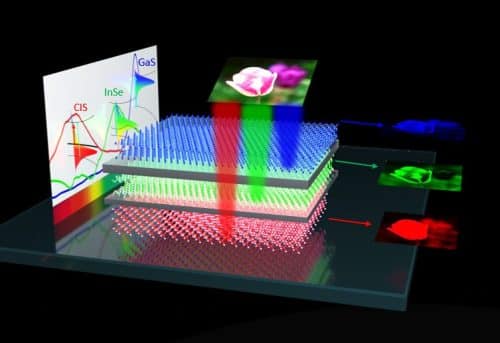“The ultimate purpose of our research is to develop a micro-scale camera for microrobots that can enter narrow spaces that are intangible by current means, and open up new horizons in medical diagnosis, environmental study, manufacturing, archaeology, and more.”
Researchers at Georgia State University have created a new form of artificial vision device that uses a novel vertical stacking architecture to enable for higher colour recognition depth and micro-scale scalability.
“This work is the first step toward our final destination – to develop a micro-scale camera for microrobots,” says assistant professor of Physics, Sidong Lei, who led the research. “We illustrate the fundamental principle and feasibility to construct this new type of image sensor with emphasis on miniaturization.”
Using nanotechnology, Lei’s team was able to establish the framework for a biomimetic artificial vision device that uses synthetic ways to replicate biochemical processes. This biomimetic “electronic eye” improves colour recognition, the most important vision function that is currently being overlooked in research due to the difficulties of downscaling conventional colour sensor devices. Traditional colour sensors have a lateral colour sensing channel structure, which takes up a lot of space and results in less precise colour identification.

Researchers devised a revolutionary stacking technique that takes a fresh look at hardware design. According to him, the van der Waals semiconductor-empowered vertical colour sensing structure has exact colour identification capabilities, which simplifies the design of the optical lens system for artificial vision downscaling.
“The new functionality achieved in our image sensor architecture all depends on the rapid progress of van der Waals semiconductors during recent years,” says Ningxin Li, a graduate student in Dr Lei’s Functional Materials Studio who was part of the research team. “Compared with conventional semiconductors, such as silicon, we can precisely control the van der Waals material band structure, thickness, and other critical parameters to sense the red, green, and blue colors.”
Read the entire study here.





